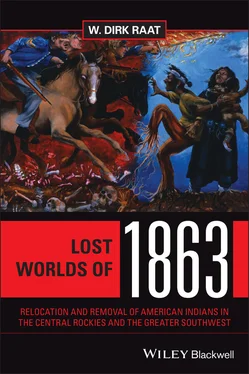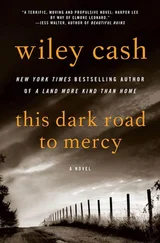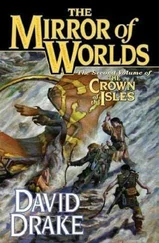In January 1847, Commodore Robert F. Stockton, commander of the Pacific Fleet headquartered in Monterey, appointed Frémont military governor of California. But when General Stephen Kearny of the US Army arrived later that year in an overland march from Santa Fé, Stockton dismissed Frémont and declared Kearny the governor. Frémont stubbornly refused to accept Stockton’s decision and was extremely slow to relent. He was later convicted of mutiny and disobedience of a superior officer. While approving of the court’s action, President Polk quickly commuted his dishonorable discharge sentence because of his prior service to the country. 44
Back in St. Louis, Frémont and his father-in-law privately financed a fourth expedition in the later months of 1848 that would survey a railway line along the 38th parallel between St. Louis and San Francisco. This was the ill-fated mission that was lost in the winter snow and cold in the passes through the Sangre de Cristo Mountains. When the expedition finally made its way to Taos they were missing ten men, some, it was rumored by his political opponents, to cannibalism. 45Still, with his triumphs and failures behind him he was sufficiently well known and close enough to power (in 1850–1851 Frémont was one of the first two senators from California to the US Senate) to receive the nomination for president of the United States by the Republican Party in 1856. This was when the nation learned of his “free soil” policies.
The Free Soil Party was founded in Buffalo, New York, and was active in the presidential elections of 1848 and 1852. It was a single-issue third-party movement that consisted of anti-slavery members of the Democratic and Whig Parties. Its banner was “Free Soil, Free Speech, Free Labor and Free Men,” and its main cause was opposing the expansion of slavery into the western territories. Free soilers believed that if slavery were contained it would die out. It was not an abolitionist movement, and many abolitionists, such as William Lloyd Garrison, believed the free soil movement to be “white manism,” a philosophy that would free white labor and northern businessmen from the economic competition of slavery. 46Merging of the Free Soilers and Whigs in 1854 divided the Whig Party. In general, southern Whigs went over to the Democrats while discontented northern Whigs created the new Republican Party. The Whig and Free Soils parties disappeared from the American landscape.
As a popular military man, both Democrats and Republicans sought out Frémont as a candidate in 1856. He turned the Democrats down because he opposed their doctrine of “popular sovereignty” (that would allow the settlers to decide the issue of slavery or not in their territories), and he favored a Free Soil Kansas. He also opposed the Democratic-supported Fugitive Slave Law of 1850. So the Free Soil Democrat became a Republican and accepted their nomination. Their slogan, echoing their Free Soil Party roots, was “Free Soil, Free Men, and Frémont.” 47
A new third party joined the fray, the nativist American Party (called the “Know- Nothing Party” by its opponents, since, as a secret party, when asked about its purpose, their members would reply, “I know nothing”), which ran ex-president Millard Fillmore and gathered over 20% of the popular vote. They were basically an America-first group that opposed Catholic immigrants. While the Republicans pushed their Free Soil campaign, the Democrats warned the public that victory for the Republicans would mean civil war for the country. While the Democrats attacked Frémont’s illegitimate birth, the Know-Nothings accused Frémont of being a Catholic, an absurd charge that the Republicans could not counter since they did not want to offend their German Catholic voters. When the votes were counted Frémont received 114 electoral votes while the Democratic candidate, James Buchanan from Pennsylvania, got 174. Surprisingly, Frémont lost his home state of California, with Buchanan receiving over 48% of the vote, while the Know-Nothings got 32%. Poor John could only gather in a little over 18% of the California tally. 48Perhaps this was an omen that the future might not be as bright as the past.
The question first posed in this chapter must now be answered. If Frémont were a free soiler who opposed the expansion of slavery into the territories, and California had been a territory since 1846 and a state since 1850, how could this man, who was a friend to many anti-slavery proponents, own so many de facto Indian slaves and peons on his gold ranch in California? 49What was his actual situation, and did his wealth come from exploiting Indian workers? Did he think Indian peonage and involuntary servitude in California was the norm, while African chattel slavery in the American West was not? And what about his wife Jessie and what was her situation? To answer these questions it is first necessary to look briefly at the traditions and customs of Indian slavery in both Spanish-Mexican California before 1850 and Anglo-American California after 1850. 50
The system of law that the Anglo-Americans of California created after 1846 perpetuated the labor exploitation of the Spanish colonial era and the Mexican period. In the first years of military rule in California a series of martial codes restricted the freedom of the Indian, including labor contracts that bound the Indian workers to their employer, limitations on the freedom of movement of all Indians, and the development of an Indian apprenticeship that allowed whites to obtain and control Indian labor. All of these restrictions were very reminiscent of the Spanish system of encomienda and repartimiento of the early period, as well as the hacienda peonage of the later era—Indians were free, but not free to not work. 51
By 1849, California had established a constitutional government. As a condition for California’s entry into the Union the delegates agreed that slavery would be prohibited in that state. However, they were speaking of black slavery, not Indian slavery. As for the Indian, they were to remain what they had always been—a subservient class of workers. Accordingly, when dealing with suffrage they voted to limit it along racial and sexual lines and only allowed “white male citizens” to vote. In the final analysis, however, it was the 1850 law entitled “An Act for the Government and Protection of Indians” that defined the status and place of Indians in California society. 52
The 1850 law stated that any able-bodied Indian who refused to work would be liable to arrest, and “vagrants” could be hired out for up to four months. Indian convicts could be bailed out by “any white person,” and they would be forced to work for the person doing the bailing. Under the apprenticeship clause of the law, whites could legally obtain the services of Indian males under 18 and females under 15. A revised statute in 1860 allowed third parties to obtain Indian children without parental consent. In effect, the peonage system of the Mexican period was being extended and legalized for the post-1850 Americanized state of California. 53
Whatever the intent of these laws, the apprenticeship clauses had the effect of encouraging kidnapping and selling of Indian children. Desperados and reckless criminals plied their trade in the frontier areas of northern counties like Humboldt, selling and ransoming their human prey to eager participants in southern California. Young Indian women and child “apprentices” were forcibly wrested from their families and communities and sold to miners, ranchers, and farmers. While most worked in mining, ranching, and agriculture, many of the female slaves became domestic servants. The state was approving a form of Indian servitude not found in the earlier Spanish and Mexican period, crossing the boundary from peonage to slavery. It has been estimated that over 4,000 children were stolen between 1852 and 1867, with the prices for Indian women and children dependent upon sex, age, physical attributes, and usefulness. 54
Читать дальше












